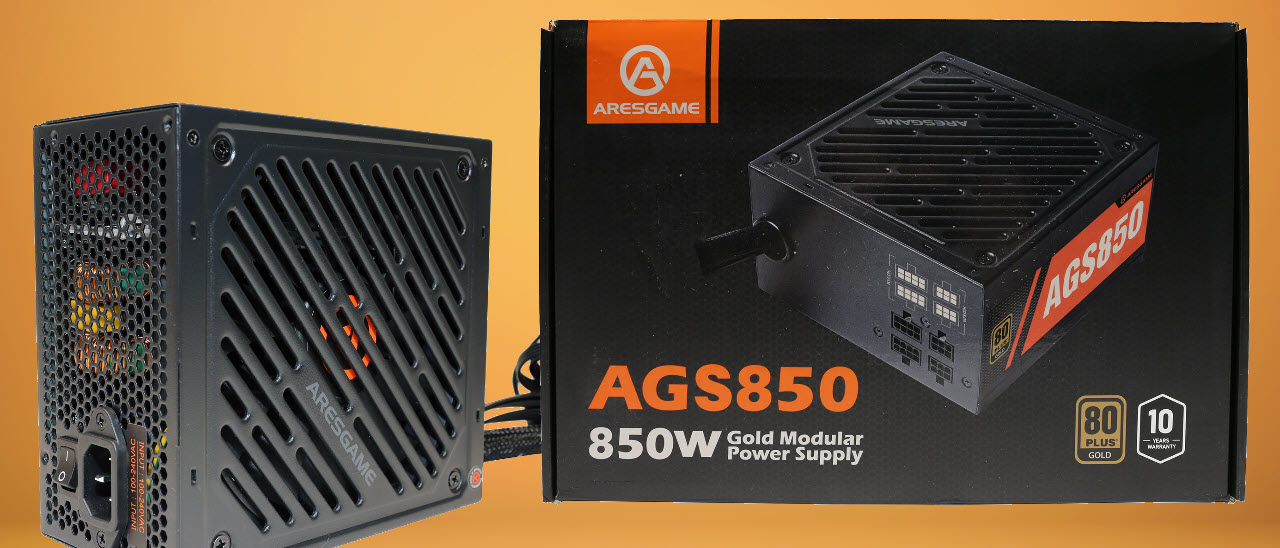Why you can trust Tom's Hardware
Advanced Transient Response Tests
For details about our transient response testing, please click here.
In the real world, power supplies are always working with loads that change. It's of immense importance, then, for the PSU to keep its rails within the ATX specification's defined ranges. The smaller the deviations, the more stable your PC will be with less stress applied to its components.
We should note that the ATX spec requires capacitive loading during the transient rests, but in our methodology, we also choose to apply a worst case scenario with no additional capacitance on the rails.
Advanced Transient Response at 20% – 20ms
| Voltage | Before | After | Change | Pass/Fail |
| 12V | 12.253V | 11.996V | 2.10% | Pass |
| 5V | 5.087V | 4.975V | 2.21% | Pass |
| 3.3V | 3.385V | 3.120V | 7.82% | Fail |
| 5VSB | 4.979V | 4.921V | 1.16% | Pass |
Advanced Transient Response at 20% – 10ms
| Voltage | Before | After | Change | Pass/Fail |
| 12V | 12.253V | 12.012V | 1.96% | Pass |
| 5V | 5.087V | 4.940V | 2.88% | Pass |
| 3.3V | 3.384V | 3.134V | 7.38% | Fail |
| 5VSB | 4.979V | 4.903V | 1.52% | Pass |
Advanced Transient Response at 20% – 1ms
| Voltage | Before | After | Change | Pass/Fail |
| 12V | 12.254V | 11.953V | 2.46% | Pass |
| 5V | 5.087V | 4.959V | 2.51% | Pass |
| 3.3V | 3.385V | 3.162V | 6.59% | Pass |
| 5VSB | 4.979V | 4.916V | 1.26% | Pass |
Advanced Transient Response at 50% – 20ms
| Voltage | Before | After | Change | Pass/Fail |
| 12V | 12.184V | 11.951V | 1.91% | Pass |
| 5V | 5.026V | 4.908V | 2.35% | Pass |
| 3.3V | 3.351V | 3.075V | 8.25% | Fail |
| 5VSB | 4.909V | 4.847V | 1.26% | Pass |
Advanced Transient Response at 50% – 10ms
| Voltage | Before | After | Change | Pass/Fail |
| 12V | 12.184V | 11.956V | 1.87% | Pass |
| 5V | 5.026V | 4.896V | 2.58% | Pass |
| 3.3V | 3.351V | 3.090V | 7.78% | Fail |
| 5VSB | 4.909V | 4.827V | 1.67% | Pass |
Advanced Transient Response at 50% – 1ms
| Voltage | Before | After | Change | Pass/Fail |
| 12V | 12.186V | 11.971V | 1.76% | Pass |
| 5V | 5.024V | 4.865V | 3.16% | Pass |
| 3.3V | 3.351V | 3.093V | 7.70% | Fail |
| 5VSB | 4.911V | 4.855V | 1.14% | Pass |








Transient response is mediocre at 12V, good enough at 5V and 5VSB, and terrible at 3.3V.
Turn-On Transient Tests
In the next set of tests, we measure the PSU's response in simpler transient load scenarios—during its power-on phase. Ideally, we don't want to see any voltage overshoots or spikes since those put a lot of stress on the DC-DC converters of installed components.
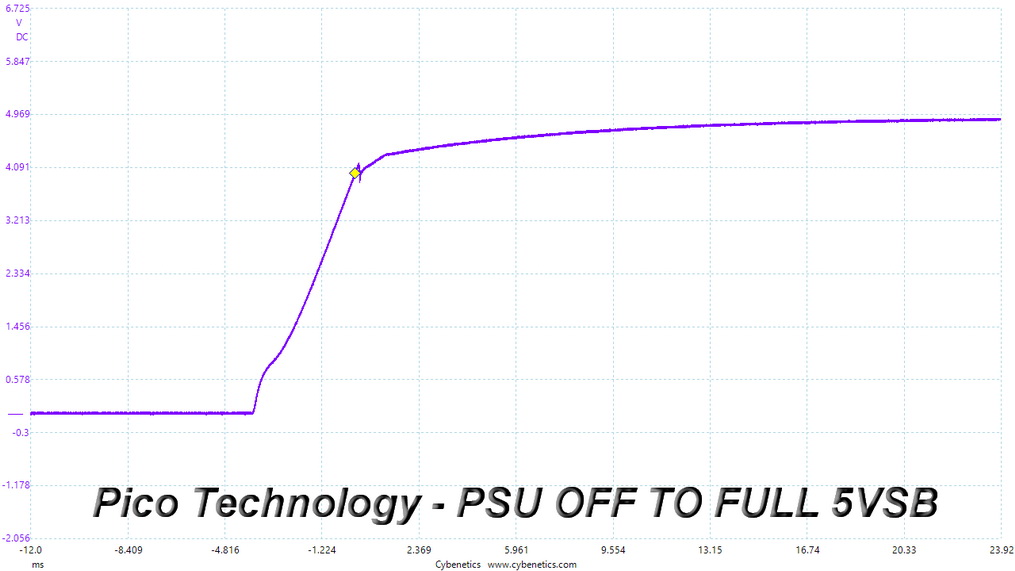
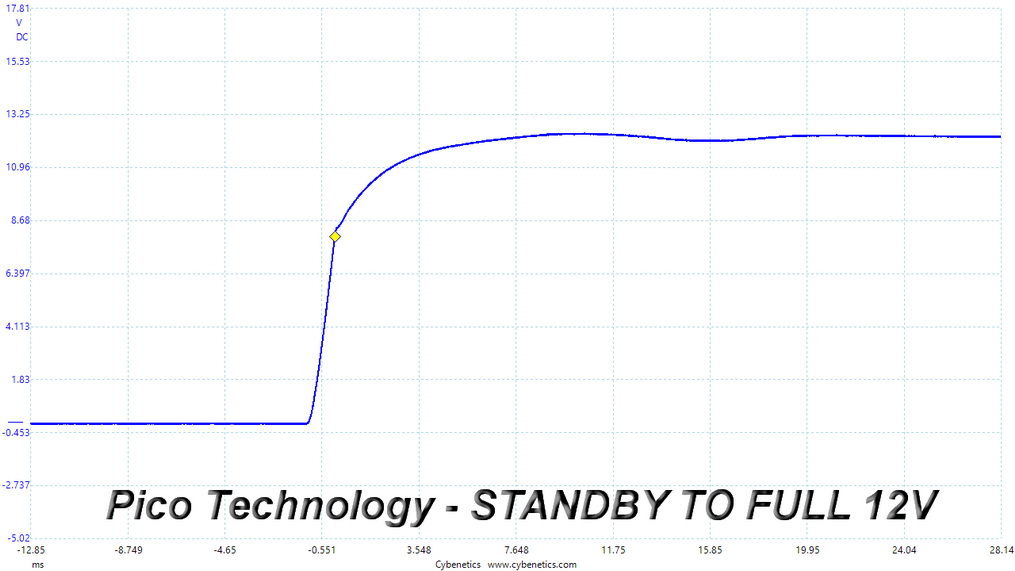

Not perfect results here, but not bad, either.
Power Supply Timing Tests
There are several signals generated by the power supply, which need to be within specified, by the ATX spec, ranges. If they are not, there can be compatibility issues with other system parts, especially mainboards. From year 2020, the PSU's Power-on time (T1) has to be lower than 150ms and the PWR_OK delay (T3) from 100 to 150ms, to be compatible with the Alternative Sleep Mode.
Get Tom's Hardware's best news and in-depth reviews, straight to your inbox.
| T1 (Power-on time) & T3 (PWR_OK delay) | ||
|---|---|---|
| Load | T1 | T3 |
| 20% | 43ms | 326ms |
| 100% | 44ms | 325ms |

PSU Timing Charts



The PWR_OK delay is out of the 100-150ms region, so the PSU does not support the alternative sleep mode recommended by the ATX spec. The Power-on time is way lower than 100ms, though, to retain compatibility with all mainboards.
Ripple Measurements
Ripple represents the AC fluctuations (periodic) and noise (random) found in the PSU's DC rails. This phenomenon significantly decreases the capacitors' lifespan because it causes them to run hotter. A 10-degree Celsius increase can cut into a cap's useful life by 50%. Ripple also plays an important role in overall system stability, especially when overclocking is involved.
The ripple limits, according to the ATX specification, are 120mV (+12V) and 50mV (5V, 3.3V, and 5VSB).
| Test | 12V | 5V | 3.3V | 5VSB | Pass/Fail |
| 10% Load | 11.4 mV | 18.1 mV | 8.3 mV | 10.4 mV | Pass |
| 20% Load | 13.2 mV | 18.9 mV | 8.7 mV | 11.9 mV | Pass |
| 30% Load | 20.0 mV | 19.5 mV | 8.7 mV | 12.2 mV | Pass |
| 40% Load | 24.7 mV | 20.5 mV | 9.7 mV | 13.6 mV | Pass |
| 50% Load | 27.7 mV | 22.2 mV | 11.8 mV | 16.2 mV | Pass |
| 60% Load | 31.8 mV | 24.0 mV | 13.7 mV | 19.0 mV | Pass |
| 70% Load | 36.1 mV | 28.2 mV | 16.7 mV | 23.0 mV | Pass |
| 80% Load | 44.7 mV | 31.9 mV | 25.1 mV | 26.6 mV | Pass |
| 90% Load | 53.9 mV | 33.5 mV | 29.8 mV | 30.5 mV | Pass |
| 100% Load | 64.7 mV | 37.9 mV | 33.9 mV | 36.0 mV | Pass |
| Crossload 1 | 14.3 mV | 30.0 mV | 29.4 mV | 15.0 mV | Pass |
| Crossload 2 | 14.0 mV | 31.7 mV | 22.7 mV | 14.1 mV | Pass |
| Crossload 3 | 12.0 mV | 15.2 mV | 26.5 mV | 13.4 mV | Pass |
| Crossload 4 | 66.0 mV | 26.1 mV | 19.8 mV | 29.9 mV | Pass |



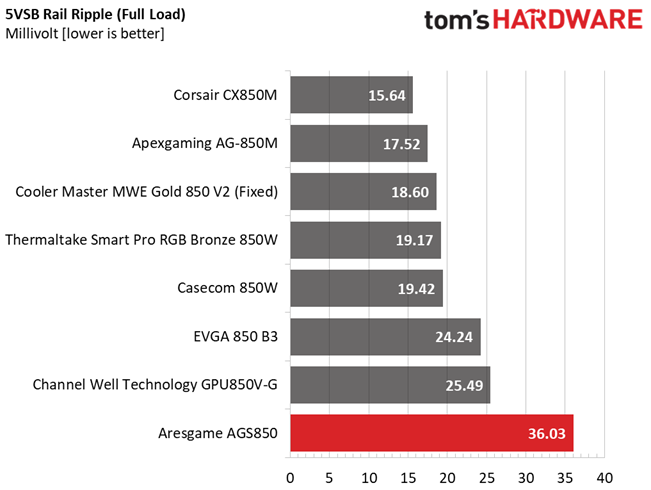
Ripple suppression is mediocre in general. We would like to see below 40mV, ideally below 30mV, at 12V and close to 20mV tops on the minor rails.
Ripple At Full Load




Ripple At Cross-Load 1



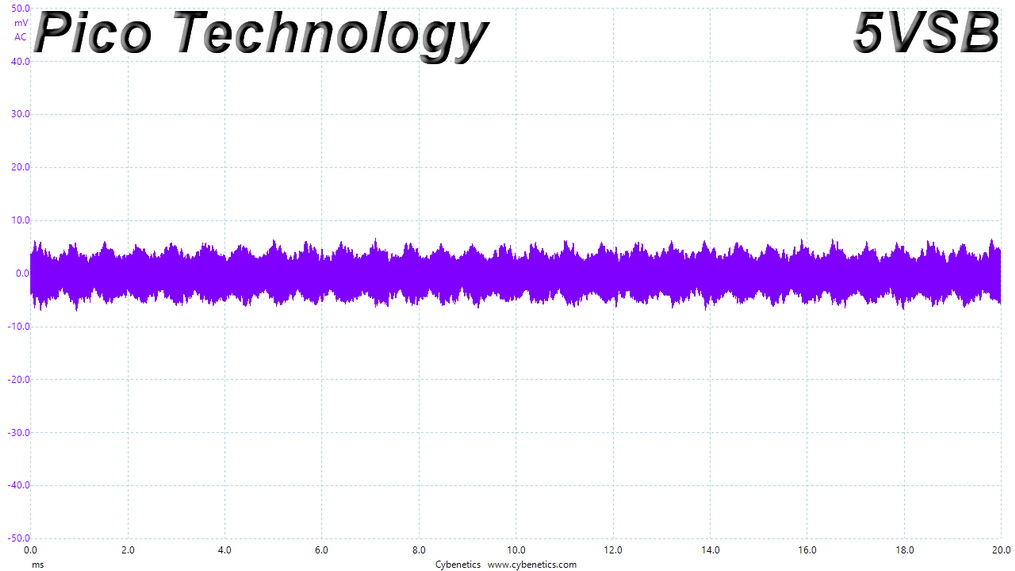
Ripple At Cross-Load 4


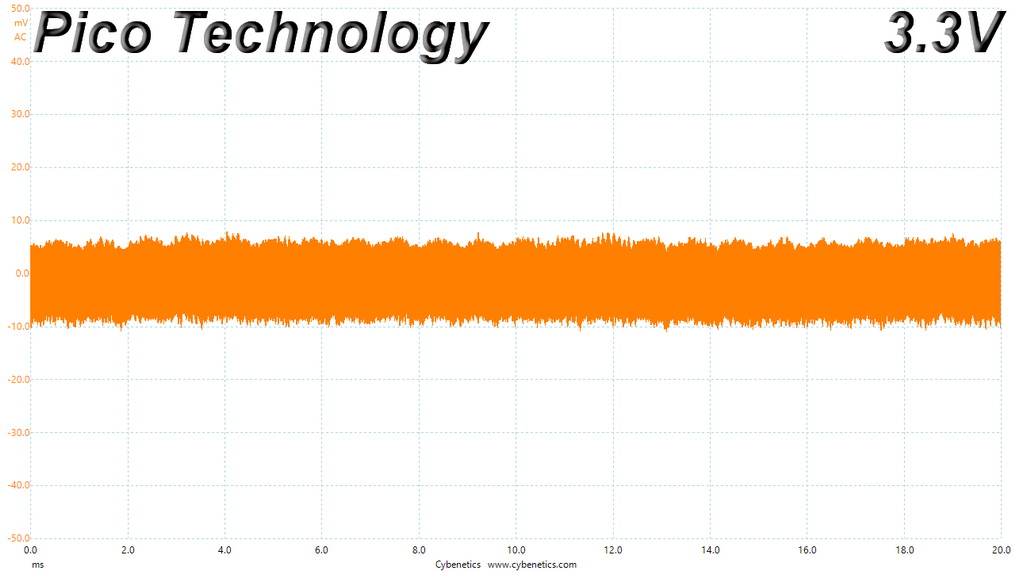

EMC Pre-Compliance Testing – Average & Quasi-Peak EMI Detector Results
Electromagnetic Compatibility (EMC) is the ability of a device to operate properly in its environment without disrupting the proper operation of other nearby devices.
Electromagnetic Interference (EMI) stands for the electromagnetic energy a device emits, and it can cause problems in other nearby devices if too high. For example, it can be the cause of increased static noise in your headphones or/and speakers.
EMI emissions are high at low frequencies, below 1MHz.
MORE: Best Power Supplies
MORE: How We Test Power Supplies
MORE: All Power Supply Content
Current page: Transient Response Tests, Timing Tests, Ripple Measurements and EMC Pre-Compliance Testing
Prev Page Protection Features, DC Power Sequencing, Cross-Load Tests and Infrared Images Next Page Performance, Noise, Efficiency and Power Factor
Aris Mpitziopoulos is a contributing editor at Tom's Hardware, covering PSUs.
-
escksu I think this review simply enforce the fact that you should always buy your PSU from reputable brands like Seasonic, Superflower etc.... For those that you have never heard of, well.....forget it.Reply -
Co BIY Thousands of reviews on Amazon for a product not sold on Amazon. I wonder if any of them are legit ?Reply
